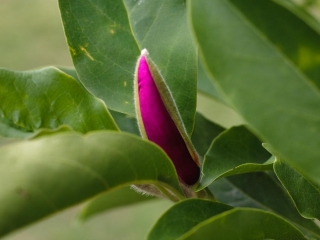 he
he
surprise lily is just that; a surprise. The other day I was scratching around the front gate, trying to get a handle on some low-growing weeds near the Don Juan climbing roses. It was mostly spurge,
Oxalis, and that low-growing—
we hates it, Precious; nasty little…—well, whatever it’s called. Forgive me. I lost it for a bit there. I wouldn’t dignify the spurge with its Latin name except for the fact that it shares a genus with the Christmas poinsettia:
Euphorbia. Where was I?
While scratching in the bit of bare ground—except for the afore-mentioned weeds—around the front gate, near the Don Juan climbing roses, it dawned on me just where I was scratching, and what time of year it was, and why that little spot was “bare.” Well, surprise, surprise, but what should I see the next day but a number of pale green bud-tipped shafts emerging from the very spot I was weeding the day before. You see, surprise lilies get their common name from the fact that the one-inch wide strap-like foliage appears in the spring, providing energy to the underground bulb, in order to enable it to produce some flowers. But no flower stalks emerge. After three or four weeks the foliage browns out and dies, and you say “Well, what a cheat.” A couple of months after you forget about it, Gomer Pyle comes around and says “Surprise, surprise.” The shafts emerge quickly and the buds open in just a couple of days to to gorgeous pale-pink trumpets that smell delightful. The scene is a bit surreal because the absence of foliage make the blooms look fake, like someone stabbed plastic flowers in the flower bed.
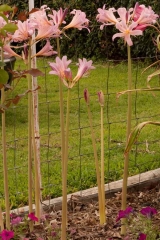
Surprise lily is officially known as
Lycoris squamigera. How dull can that be? The Latin is necessary in order to accurately identify and categorize, but the common names add color and reflect on culture and human nature. Surprise lily is also known as
magic lily,
resurrection lily, and—I’ve saved the best/worst for last—
nekkid ladies or
naked lily, to tone it down a bit. In our front yard we have another representation of the genus
Lycoris in the spider lily;
L. radiata, which follows a totally different calendar for bloom and foliage periods, not to mention size shape and color. I’ll leave you hanging there in suspense, saving the details until spider lilies come into bloom and make their debut on
Friday Floral later this year. I’ll bet you’re biting your nails all ready.
Surprise lily is easy to grow, with no cold hardiness issues here in Oklahoma. The bulbs are rather large, about the size of a baseball, and rarely need to be dug up and divided. Because they leave the ground bare a good bit of the year you might consider planting them near some other bulbs that bloom at a different time so they can have overlapping spaces. Most commonly, you will find these “pink flamingos” stabbed out in the suburban lawn, a practice I perfectly detest, but it is one solution. The bloom period is when you won’t be mowing much anyway, and when the show is over you can just mow it all down. No mess, no fuss. The only problem is in the spring when the mass of foliage emerges. You have to mow around it for weeks while it becomes a nest for all kinds of vermin. You choose; it’s your yard.
That’s it for this week. Go out and plant something, or scratch up some weeds—the nasties, we hates ’em. If you have a surplus in your garden, then share with neighbors. It makes a great ice breaker for sharing the gospel of Christ. That is, if you’re not trying to pawn off those overgrown baseball-bat zucchinis. See you in church on Sunday.
 n his Systematic Theology, Wayne Grudem occasionally offers a personal comment relating to the current evangelical state in America. In his chapter on conversion, after showing from Scripture and logic that faith and repentance are inseparable, Grudem gives this analysis:
n his Systematic Theology, Wayne Grudem occasionally offers a personal comment relating to the current evangelical state in America. In his chapter on conversion, after showing from Scripture and logic that faith and repentance are inseparable, Grudem gives this analysis:
 he
he
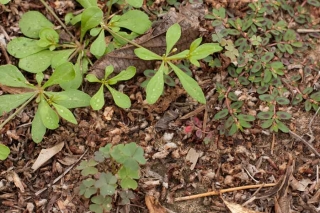

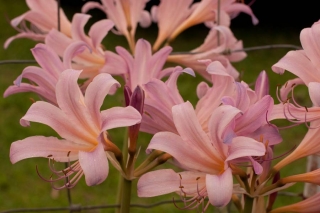
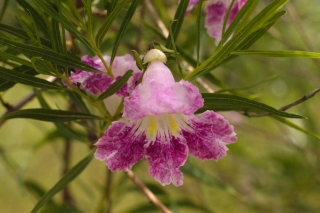
 ost folks here in Oklahoma probably don’t have a clue who Doug Baker is. You better get to know him, because come August 1 he will take over the reins of our state association’s paper, the Baptist Messenger. The Messenger announced the selection of their new executive editor this last week in two separate articles. I know of Doug Baker from a
ost folks here in Oklahoma probably don’t have a clue who Doug Baker is. You better get to know him, because come August 1 he will take over the reins of our state association’s paper, the Baptist Messenger. The Messenger announced the selection of their new executive editor this last week in two separate articles. I know of Doug Baker from a 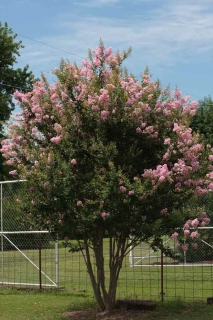
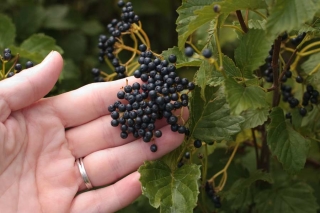
 o this is not a post about Barney Fife.
o this is not a post about Barney Fife.